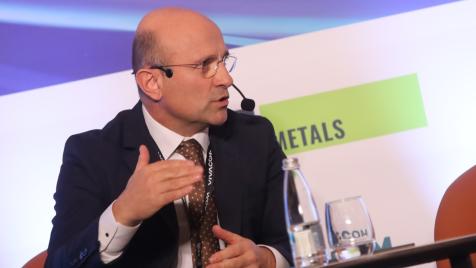Visions From the Future
Science fiction writers, scientists and psychics have the ability to catch a glimpse of what is to come. Does it happen by accident?

The best way to predict the future is to create it - states the catch phrase attributed to Abraham Lincoln. But before the future is created, it must be "seen", and some people have this ability more than others.
A Look at the Stars
Jules Verne is one of the most productive writers of the 19th century. He has built his works around a number of scientific facts of his time. Many of his fantasies seemed like nonsense, but a lot of them are already a reality: Professor Schulze created the first artificial satellite in the book "The Begum's Five Hundred Million" published in 1879. Sputnik, the first artificial satellite, was launched into orbit by the Soviet Union on 4th October 1957, from Baikonur Cosmodrome. In "From the Earth to the Moon," published in 1865, Jules Vern envisions the man in space. On 12th April 1961, the Russian astronaut Yuri Gagarin became the first traveller in the orbit around the Earth. In "Twenty Thousand Leagues under the Sea", issued in 1869, one can see the characteristics of the first US nuclear submarine in the description of the Nautilus submarine. It received the same name as Jules Verne's ship and was released on 17th January 1955. The capsule, which the astronauts use to fly in "Around the Moon” (1870), is made of aluminium. The use of this metal began in 1920 when modernisation made its production cheaper.
No-Cash Society
Today the world of money is more and more like a fantasy novel. E-banking allows real time access to accounts from different parts of the world. This was described by Edward Bellamy back in 1888 in the novel "Looking Backward: 2000-1887" through the concept of the "Universal Account". Characters carry cards, which they use for shopping, without using paper money. Two years ago, the Swiss Swatch Bellamy wristwatch appeared on the market to make contactless payments. Its name is inspired by the author of this utopia. The non-contact technology embedded inside of it uses high-frequency radio waves to allow communication between electronic devices over short distances.
Phone in Pictures
Videophone conversations were described in 1911 by Hugo Gernsback in the novel "Ralph 124c 41+". It tells about a device called Telephot that allows people to see themselves while speaking, despite the long distances that separate them. The first demonstration of video conferencing was made in 1964 at the AT & T World Expo in New York. It showed its "phone in pictures" in front of the stunned audience. Since then, technology has gone a long way in its development and refinement.
Big Brother
In 1949, George Orwell wrote "1984". The concept of total state control and surveillance by security cameras seemed absurd. Today, video surveillance is a fact; cameras are everywhere and cover ever larger areas. If we add GPS tracking, there is no way we can get rid of the feeling that we are creating a total "Big Brother" that came out of Orwell's pages.
One of the greatest achievements in the last century is the introduction of the communications network. It is now difficult to imagine a time when the world was not connected by satellite transmitters. In 1945, Arthur Clarke wrote "The Space-Station: Its Radio Applications," where he talks about geosynchronous satellites that are used for telecommunication retransmissions, mostly on television signals. This happened long before free-to-air TV has entered people's everyday lives.
Fictional and Real
John Brown's "Stop in Zanzibar" is considered one of the most prophetic sci-fi novels. Created in 1969, the fictional plot turned out to be quite similar to real life in 2010. The book introduces the reader to the influential leader, called President Obomi. The biggest source of instability and violence in this plot comes from the terrorists. Considered a major threat to the United States, they plan to attack American skyscrapers. Europeans have formed a union of nations to improve their economic prospects and to influence the world of business. Great Britain remains out of the union. The United States is not in competition with the Soviet Union, but with China. Marriage is in decline, and the younger generation prefers short-term relationships without any formal engagement. TV channels are distributed globally via satellites and it is possible to watch a delayed broadcast. The airplane seats are equipped with TV screens where news or videos can be watched. Digital documents are printed with laser printers.
Holographic Model
Scientists also make their predictions and give warnings. For example, in his last work, the eminent astrophysicist Stephen Hawking explores the possibility of "multiverse" - a reality made up of an infinite number of universes that may interact. His main assumption is that the Big Bang theory is not entirely accurate, and our universe is a hologram that is just a microscopic particle of the whole collection of universes. In fact, scientists have been hypothesising and looking for evidence for years that the universe is a giant hologram, which is why phenomena such as clairvoyance, prophecy, and telepathy exist.
Before the Facts
Along with science fiction writers, scientists and inventors, the future is also predicted by psychics and clairvoyants. The Serbs Mitar Tarabic (1829-1899) and his uncle Milosh Tarabic had such abilities. Without ever leaving their native village of Kremna, they predicted both local and global events, as well as many people's destinies. They were both illiterate, but in their visions they have seen machines, airplanes and electricity. They described the trips to the moon and other planets, radio, television, computers, and inventions that are not yet known to us. They have introduced a new word "sokochalo" for the flow of energy into a common "pipe", enabling an unknown form of communication at the time between the people that the global network and smart phones offer today. Our clairvoyant Vanga also had amazing abilities. Her prediction that, in the mid-twenty-third century, people will be able to travel in time is quoted.
Among the entrepreneurs who have taken upon the mission of turning fictional ideas into reality is Elon Musk, the founder of Tesla and SpaceX. He develops electromobiles, goes into the space, has plans for an upcoming mission to Mars and looks for new applications for solar energy and for the development of artificial intelligence. According to Musk, there are two options: either to create a virtual world in the future, or to already be part of some sort of simulation.
The technological future requires a lot of effort and energy for us to create it. But this is the direction for the development of mankind.

 Tatyana Yavasheva
Tatyana Yavasheva 
